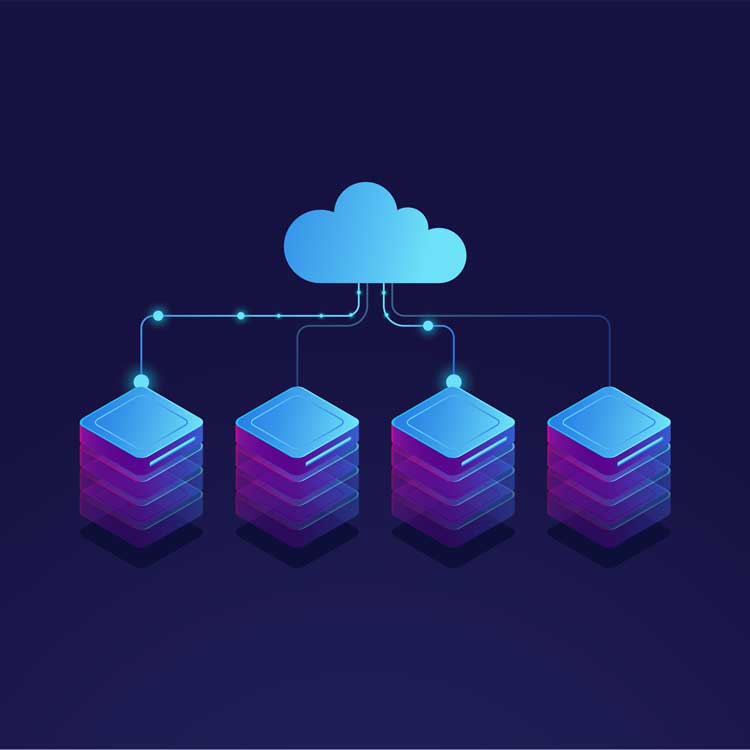With three-quarters of global enterprises describing their data infrastructure strategy as hybrid or multicloud, IT organizations are looking to apply the cloud’s flexibility, scalability and pay-as-you-go pricing to some of their most important workloads: their databases.
Moving a database entirely to the cloud isn’t always an option. Companies in regulated industries with ownership or data sovereignty requirements may have to keep all or part of their data stores on site.
“In certain instances, keeping data on-premises is the only way to secure it,” said Tanner Arnold, president and CEO of Revelation Machinery.
Others want to retain ownership of their data while also having the flexibility to share copies selectively with employees and partners. Distributed cloud databases offer the best of both worlds, combining cloud infrastructure’s scalability and availability with local control.
There are also built-in data protection benefits since data stores can be automatically backed up or mirrored across multiple clouds for better protection.
For all these reasons, Gartner has forecast that in the future, “most organizations' DBMS deployments will coexist in the on-premises and cloud worlds simultaneously. There’s even been an uptick in IT professionals reskilling for this hybrid cloud future. But how does a distributed cloud database work and how are companies leveraging the tech?
What are Distributed Cloud Databases?
Distributed cloud databases house operational databases across various physical locations — in-house data centers, hybrid clouds, or different public clouds.
Distributed databases are nothing new – the concept dates back to the 1970s – but the idea has gained traction recently with the proliferation of NoSQL databases such as Apache Cassandra, Apache HBase, Couchbase, Presto and Clusterpoint. These engines are typically used to analyze copies of production data and to mix structured and unstructured elements to gain new insights.
While rarely deployed for mission-critical processing, distributed cloud databases support users’ growing appetite for decision-support data, enabling IT organizations to scale usage as needed without installing additional infrastructure.
The task of managing databases across multiple platforms has always been fraught with complexity and risk, but new technology is erasing the need for many database-specific skills while simplifying complex tasks like backup and integrity control. The result is a sea change in the way companies think about where data lives and who can use it.
“Hybrid cloud databases have enormous business benefits for companies because they allow a company to run the database where the business and data dictates rather than where the technology dictates,” according to Neil Carson, CEO of Yellowbrick Data.
“This allows companies to observe data gravity or sovereignty requirements, accommodate multicloud architectures and get the performance of on-premises systems in conjunction with the scale of a cloud.”
Local and Remote Uses
On its face, database locations should not matter all that much as long as users get their data quickly and correctly. But the massive move of databases into cloud services suggests a shift is underway, one that could change databases for good. While experts work to simplify this process, cloud platforms continue to offer a dizzying range of appealing options.
Amazon Web Services alone has more than 15 database choices. Businesses can keep transaction data in their on-site relational stores and move data needed for development or analytics to a purpose-built cloud engine.
They can also deploy local databases that duplicate those in public cloud infrastructure for the purposes of cost, performance, security and other factors, according to Julien Raby, owner and website manager of Coffee-Works.
“If the private cloud provides instance types and services that are identical to the public cloud, it is easier to build, transfer and scale workloads and resources,” Raby said.
Database administrators can shift workloads between platforms as needed. For example, they can run development and testing in the cloud and shift applications back to local infrastructure for processing. Or they can replicate workloads to one or more cloud regions for backup and recovery purposes. Our digital world has become “cloudified” as more businesses turn to the infrastructure to run everyday operations. This means that cloud workloads are also skyrocketing as enterprises look to manage workloads through distributed cloud databases.
This hybrid model “lets you keep hard copies of your data while still allowing remote access to employees,” said Chris Riley, CEO of USA Rx, a digital health marketplace.
“This is extremely useful now that much of the workforce has transitioned to working from home.”
Remote work staples like videoconferencing, virtual desktops, and remote workstation management benefit from a unified hybrid and multicloud environment.
What About Implementing?
But migrating to and managing a hybrid environment is challenging. Data integrity must be maintained. Copies of production data can’t be allowed to proliferate and create confusion or errors. Security is a concern when data traverses public networks and management complexity grows with the number of database platforms involved.
“Hybrid cloud databases are hard to implement,” said Caroline Lee, co-founder of CocoSign, a developer of digital signature software.
“They need to comply with legacy systems the company is using, the service provider must be flexible, a new administrative team may need to be hired and there are governance challenges.”
Nevertheless, the cost savings, reliability and flexibility payoffs are often worth the extra effort, she noted. Once this move was seen as disruptive, but now IT professionals view it as fundamental.
Applications that use data must also be aware of where it’s located.
“There’s a whole re-architecting required to take advantage of the public cloud environment,” said Chris Paap, former senior solutions marketing manager at Nutanix now at Platform9 Systems.
“It’s not just moving a database; it’s also all the applications and reporting. You need to [operate in the] public cloud but manage like the environment is on-premises.
Software Simplification
For the last decade, IT teams have leveraged the power of automation and virtualization to make everyday tasks easier. But databases have lagged behind, until recently. There’s a lot to manage, so DBAs need the ability to establish controls for meeting their organization’s and stakeholder’s needs while having the flexibility to run on their cloud of choice, in the most cost-effective environment that meets these business requirements for a set of applications, in a region and at a given consumption level.
There are lots of moving parts and requirements to meet, said Paap.
“For example, if you’re going to run on AWS you have to become an expert in RDS,” which is the cloud giant’s distributed relational database service, Paap said.
“Your company policies and practices have to shift and it’s a learning process.”
With new offerings like Nutanix Database Service, DBAs can manage everything from a single pane of glass.
“You’re extending your environment out to the public cloud with the policies, standards and best practices already in place,” said Paap. “The way you deploy on-prem is the same as in AWS.”
The unified approach also pays off in better data protection. This increased security is especially important for regulated industries like finance services or healthcare.
“Your data can be in different locations or regions for data sovereignty reasons, and you can replicate it and manage it with the same policies,” Paap said. “You can have a Phoenix data center and an AWS instance in Frankfurt and run failover between the two.”
DBAs benefit from having a single interface for Oracle, Microsoft SQL Server, MySQL and MariaDB, Postgres, SAP HANA and other databases from their IT command center.
These new database management capabilities are changing how IT pros work together, according to Paap.
“We see DBAs evolving from being experts in Oracle or NoSQL to generalists,” he said.
Moving up the value chain is something any organization can appreciate.
This is an updated article that first appeared on April 20, 2021.
Paul Gillin is a Forecast contributing writer, speaker, author and B2B content marketing strategist. He was founding editor-in-chief of B2B technology publisher TechTarget and editor-in-chief and executive editor of Computerworld, a tech newsweekly, for 12 years.
© 2021 Nutanix, Inc. All rights reserved. For additional legal information, please go here.












